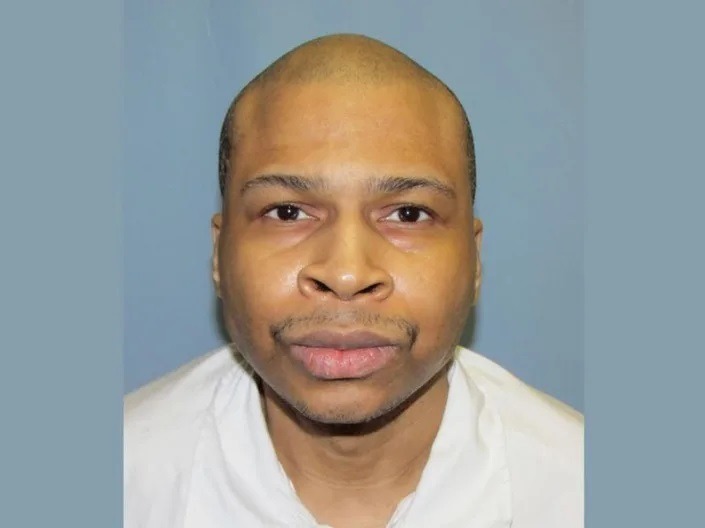A 44-year-old man named Thomas Lee Rutledge died two years ago, on Dec. 7, while incarcerated in an Alabama prison facility. Although an autopsy was performed, the cause of death was never determined until 2021. He died of hyperthermia.
The Department of Justice filed a lawsuit on Rutledge’s behalf (and his sister, LaVentra Rutledge), the same year he died, against the State of Alabama and several Alabama prison employees and private contractors for the unconstitutional conditions of their state’s prisons for men. The judge on the case is Judge R. David Proctor in Alabama’s Northern District.
Rutledge was serving life in prison without parole for capital murder in 1995. But he was re-sentenced to life with the possibility of parole because of his age when the murders happened.
According to AL.com, prison authorities found him unresponsive in his William E. Donaldson Correctional Facility cell with his face pressed against the window, trying to breathe cool air due to the continuously rising heat levels. His body temperature was at 109 degrees when he was found. The heating system’s temperature that night was 130 degrees, while the temperature outside was in the mid-40s (the lowest in the 30s).
An update was made to the federal lawsuit two weeks ago, where it was said that Rutledge “was literally baked to death in his cell.” Ironically, authorities interviewed corrections investigator Clark Hopper who was on duty in the T unit the night Rutledge died. Hopper recalled opening another inmate’s tray door to converse with him only to feel intense heat escape from the cell.
Hopper compared the heat to “opening an oven and when you (are) getting something out of the oven it hits your face.”
After opening the meal tray door, he said, “it was just, pardon the language, but it was hotter than three hells when it dropped.”
Although the autopsy ruled Rutledge’s death an accident, his attorneys said it wasn’t. They argued in the lawsuit that other incarcerated men had died from extreme heat due to the broken heater in the T-unit (mental health dorm) and that the correctional facility’s officials knew about it but did nothing.
Many of the men were on psychotropic medications that impacted their emotions, behaviors, and thoughts. Psychotropic medications put users at risk for hyperthermia since the medication impairs the body to regulate its temperature.
In 2019, an inmate died from the same circumstance as Rutledge, having an initial body temperature of 109.7 and then 108.1 about 40 minutes after dying.
According to a coroner’s report, inmates in T-unit aren’t allowed to leave their cells. They eat, shower and use the bathroom in them. The cells have heating vents, but inmates can’t control them, prompting them to cover the vents with clothing.
The lawsuit claimed that the prison got a new heating system for the building that could be remotely controlled for the seven dorms. All the dorms got the updated system except T-Unit, which had to be controlled through the mechanical control room.
The complaint listed the maintenance supervisor Billy Kennedy as a defendant, who denied he had any responsibility for Rutledge’s death. The lawsuit alleged that Kenny knew inmates complained about the heat yet didn’t act upon it either, like shutting down the boiler to prevent any harm or notifying officials.
Rutledge’s lawyers asked to see the boiler room logs, but, according to Kennedy, they were destroyed after a burst water pipe caused a flood.
A couple of days before Rutledge’s death, inmates complained about the heat, yet prison officials and private contractors overlooked the matter.
Hourly “living and breathing” checks and nightly “security checks” were conducted on the night of his death. Yet, officers Christie Sansing, John Rogers, Geoffrey Griffin and Charles Dean, defendants named in the case, allegedly didn’t address the heat issues. Checks ensued from 4 p.m. to 7:30 p.m., and Officers Rogers and Griffins reported: “all 96 units secure.” But the lawsuit alleged that the deadly heat already impacted Rutledge because, at 8:30 p.m., an inmate said to an officer that Rutledge wasn’t responsive.
All four officers claimed they were innocent, but the lawsuit revealed that the prison’s Psychotropic Medications and Heat Policy informed officers what to do if the temperature rose above 90 degrees. In that circumstance, authorities should move inmates to cooler areas and contact the shift commander and health services. If an inmate is too hot, employees should take action to cool the inmate, from fans and fluids to ice and extra showers.
While the lawsuit is relatively recent, the Justice Department investigating the conditions of Alabama prisons isn’t. In 2014, the Equal Justice Initiative staff investigated the conditions of several Alabama prisons after “hundreds of complaints about abuse, misconduct, and unconstitutional conditions” surfaced. EJI talked with over 200 inmates and former and current correctional officers who reported the misconduct, abuse and corruption.
The EJI also reported that there had been a rise in murders and abuse in Alabama prisons since the early 2000s.
The investigation was turned over to the Justice Department, which announced the statewide investigation in 2016. In 2019, the department concluded that prison officials failed to protect prisoners from unsafe prison conditions, prisoner-on-prisoner violence, and sexual abuse.
In July 2020, the department concluded that prisoners were “subjected to excessive force at the hands of prison staff.”
The misconduct doesn’t stop at prisoners. Inmates’ families have reported being abused and mistreated by prison staff. An officer allegedly denied a grandmother visiting her daughter with her grandchildren because her breath smelled bad, not allowing her to explain that her diabetes caused the foul odor.
A mother visited her son at an Alabama prison after her recovery from chemotherapy prevented her from doing so. She was forced to remove her clothes in front of three officers without any explanation before seeing her son.
Another mother drove over 1,000 miles to visit her ill son in prison but was denied entry due to a problem with his visiting list. On her drive back, she received a call that her son had died, and she had to drive back to identify his body.















